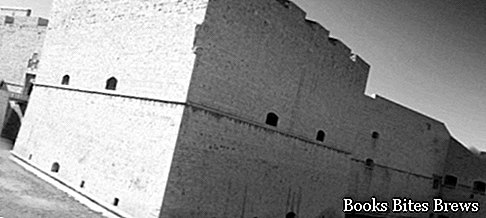What to see in Barletta, called the city of the challenge, an itinerary including the main monuments and places of interest, including the Civic Museum, the Swabian Castle, the Church of the Holy Sepulcher, the Colossus and the Cathedral.
Tourist information
Provincial capital with Andria and Trani, Barletta is a city in Puglia overlooking the Adriatic Sea.
Finds of Apulian tombs suggest many ancient settlements in the Barletta area, although the first historical evidence of a settlement dates back to Roman times.
The village with its port assumed importance under the Normans and the Swabians, in the fourteenth and fifteenth centuries, with the Angevins, it reached its heyday, thanks to trade with the east.
In the sixteenth century, during the struggles between the Spanish and French, among which the challenge of Barletta remained famous, which took place between 13 Italian knights, led by Ettore Fieramosca, against 13 French knights led by Guy de La Motte, who had accused the Italians of cowardice.
The challenge, won by the Italians, is recalled every year with a demonstration in period costumes.
Today the city is characterized by industrial and agricultural production, by the commercial importance of its port and by the promotion of various cultural initiatives.
Theater of many cultural events and home to the Civic Museum, the Swabian Castle is located in the square of the same name in the Santa Maria district, in the north-eastern part of the city.
Around the eleventh century it was the Normans who founded the manor, located a few steps from the sea and protected by a moat in the part facing the city.
Over the centuries the structure has undergone various transformations, desired by the various dynasties that alternated in power, starting with the Swabians, then by the Angevins, and especially by the Aragonese with Charles V of Spain, who, in the sixteenth century, added four bulwarks.
What see
In the historic center there is the Church of the Holy Sepulcher, where once crusaders and pilgrims stopped and found accommodation in the Pilgrims' Hospital near the Church.
Recommended readings- Trani (Puglia): what to see
- Puglia: Sunday day trips
- Manfredonia (Puglia): what to see
- Vieste (Puglia): what to see
- Altamura (Puglia): what to see
Founded in the eleventh century and entirely rebuilt at the end of the thirteenth in Burgundian-Gothic style, the cult building has a Gothic interior, where there is a remarkable pulpit and thirteenth-century frescoes, as well as remarkable works of art preserved in the treasury.
In front of the left side of the Church of the Holy Sepulcher stands the Colossus, a bronze statue about 5 meters high, dating back to the fifth century.
The bronze effigy most likely represents the emperor of the east Theodosius II, it also seems that it came to light during the excavations carried out by the emperor Federico II of Svevia in Ravenna, for this reason it seems reasonable to think that it was Federico II to have the ancient statue transported to Puglia.
The Cathedral, dedicated to Santa Maria Maggiore, was built on the border between the ancient village of Santa Maria and the Swabian Castle, on a pre-existing archaeological area dating back to the pre-Christian era, between the end of the fourth century BC. and the beginning of the third century BC
The Cathedral of Santa Maria Maggiore is the result of a series of architectural stratifications that from the pre-Christian era reach the present complex, which began to be built in the first half of the twelfth century in Romanesque forms and expanded between the fourteenth and sixteenth centuries according to the style Gothic.
Near the Cathedral, close to the walls, there is the Church of Sant'Andrea, located on top of a long staircase leading to the churchyard, where it is possible to admire the beautiful main portal richly decorated with marble bas-reliefs, made between the end of the two hundred and early fourteenth century.
This church built in the twelfth century on an earlier one from the early Christian era, was enlarged in the first half of the sixteenth century.
The archaeological area of Canne is located near Barletta, where one of the main battles of antiquity took place, fought between the Romans and the Carthaginians, which ended with the victory of the Carthaginians led by Hannibal.
The visit to the archaeological park starts from the Antiquarium, with finds that relate to the life of the city of Canne from prehistory to the Middle Ages, continues with the remains of the medieval city of Canne, the area of the Christian Basilicas, the area of the Apulian village and the burial ground , as well as the excavations of the San Mercurio spa complex with a cistern and water system.




